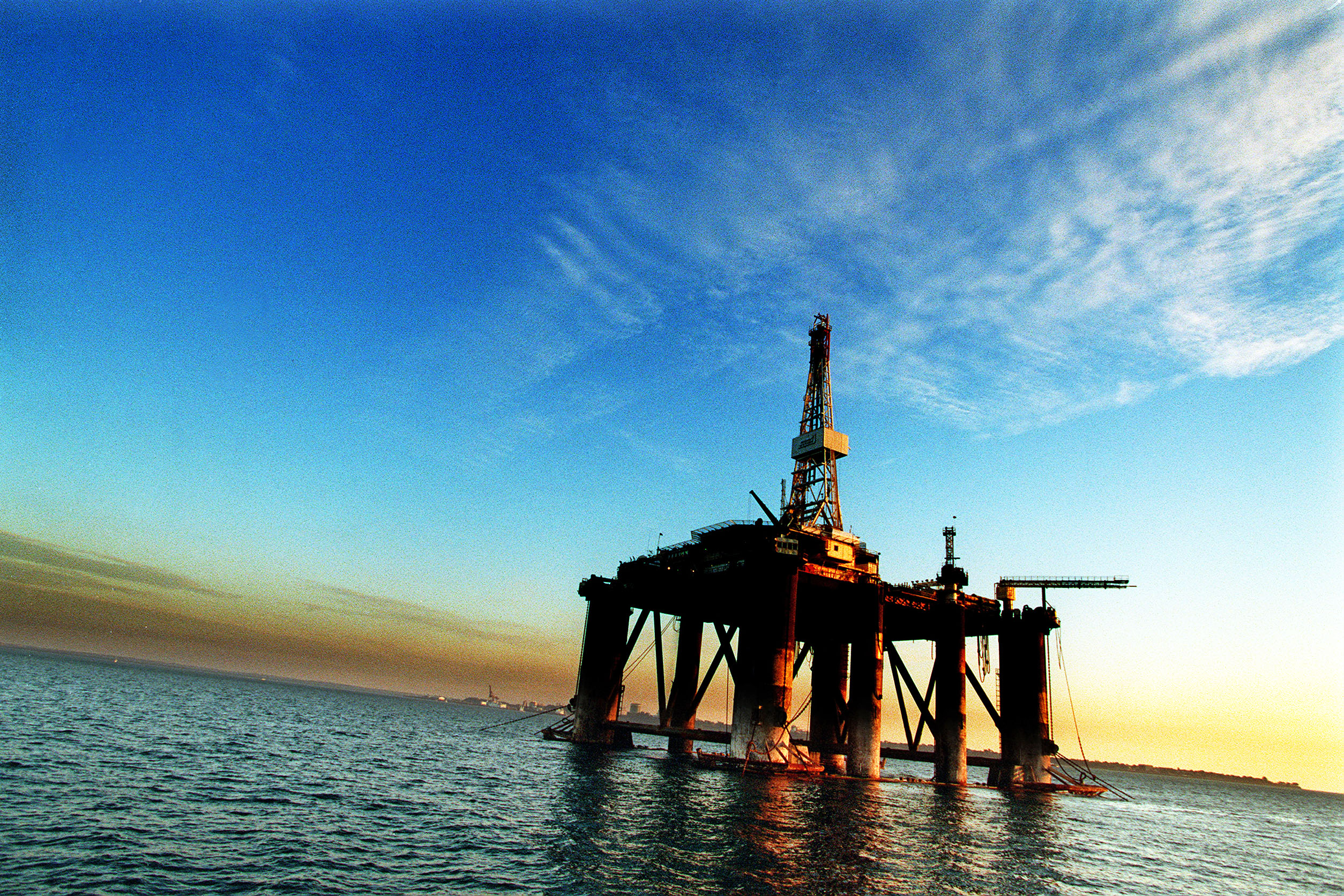In marked contrast to federal and state governments in Australia, the British government has tightened its official guidance for new oil and gas extraction projects. Informed by climate science and internationally agreed climate goals, the new rules, released in June, couldn’t be more different from Australia’s woefully inadequate, industry-friendly approach.
Australia continues to greenlight coal and gas projects, and many more giant gas and coal projects are in the planning pipeline. Most of these projects will produce fossil fuels for export. The contradiction between this expansionist approach and Australian governments’ professed commitment to tackle climate change is painfully obvious.
Consider, for example, the recent federal approval of the proposed extension to Woodside’s North-West Shelf gas processing facility at Karratha, Western Australia, which followed approval from the WA state government last December. These approvals would see the facility operating until 2070 — twenty years after the world is aiming to hit net-zero greenhouse gas emissions.
The facility’s extension would be catastrophic for the climate. According to Woodside’s own figures, it would result in 87.89 million tonnes of carbon-dioxide-equivalent emissions into the atmosphere each year. (A helpful graphic produced by the Guardian vividly illustrates the scale of these emissions.) Over its life, the project’s total emissions will equate to 4.3 billion tonnes of CO2e. Around 90 per cent of those emissions, or four billion tonnes, will come from burning the gas processed at the facility.
The project also underpins Woodside’s gambit to open up the Browse Basin for drilling — a “carbon bomb” that is itself estimated to cause up to 1.6 billion tonnes of CO2e over its lifetime, equivalent to around three times Australia’s entire annual domestic emissions.
Five features of the new British guidance expose the flawed way in which the climate impacts of projects like the North-West Shelf Extension are assessed in Australia.
First, producers must disclose likely emissions from burning the produced fossil fuels
A key British Supreme Court decision in June last year (known as Finch) made clear that the country’s environmental impact assessment laws required fossil fuel producers to assess not only the climate impact of the “upstream” emissions from the project itself (“scope 1” emissions) — the venting and flaring of methane, for example — and the emissions from energy produced off-site to power the project (“scope 2” emissions). They must also assess the impact of the “downstream” combustion of the produced fuels (“scope 3” emissions).
Scope 3 emissions from fossil fuel projects can be up to twenty times higher than scopes 1 and 2, which is why fossil fuel producers prefer to avoid disclosing them.
It was the Finch ruling that prompted Britain’s Labour government to issue the new guidance. It confirms that the environmental impact assessments required by law for new oil and gas projects must take account of scope 3 emissions.
By contrast, the WA government’s environmental assessment for the North-West Shelf project effectively ignored the project’s four billion tonnes of scope 3 emissions. In its report recommending approval of the project, the WA Environmental Protection Authority acknowledged that the project’s greenhouse gas emissions were the key environmental factor. But it only imposed conditions on the project’s scope 1 emissions. It did not “consider it reasonable to impose conditions on Scope 3 GHG [greenhouse gas] emissions at this stage because those emissions are beyond the reasonable control of the proponent.”
As the Australia Institute argues in its appeal against the EPA’s report, this logic is perverse: “If greenhouse gas emissions are a key factor, and 91 per cent of those emissions cannot be mitigated because conditions cannot be imposed over those emissions, then the EPA should recommend the proposal not be allowed.”
The British guidance takes the more logical approach. It, too, acknowledges that “a developer may not have direct control over mitigation measures for avoiding, preventing or reducing scope 3 emissions.” But it doesn’t consider this to be a reason to exclude the climate impact of those emissions when assessing the project’s overall environmental impact. If anything, the guidance implies that the inability to control those emissions would make it more difficult to justify approving a project.
(The WA EPA, via guidance published in November 2024, now advises proponents to assess scope 3 emissions where these are over 100,000 tonnes of CO2e in any year.)
Second, producers and governments must take responsibility for assessing the global climate effects of exported fossil fuels
As far as Australian state and federal approval processes are concerned, the Western Australian EPA’s approach to North-West Shelf is illustrative of a broader tendency to dismiss scope 3 emissions as “someone else’s problem.” In a revealing interview with the ABC, the former chair of the EPA, Tom Hatton (whose tenure ended before the North-West Shelf application), says he never saw it as the agency’s role to regulate scope 3 emissions: “For exported gas, those scope 3 emissions happen in jurisdictions outside of Australia, so it was never considered something that the state government, on advice from the EPA, would ever feel that they should condition, or put any conditions, on.” He added: “It would be a confusing international analysis, international arrangement, for Australia to do that.”
The last comment resembles an argument often made by fossil fuel companies when they defend new projects, and dutifully echoed by governments when they justify approving those projects: that taking account of the climate impacts of the overseas burning of Australian-produced fossil fuels undermines the alleged distribution of national responsibility for climate mitigation prescribed under the international climate regime.
But this alleged distribution is mythical. International climate agreements merely require countries to account for the emissions occurring on their territory; they do not envisage that they are exclusively responsible for such emissions. As the head of the Queensland Land Court held in an important case concerning a Galilee Basin coalmine proposed by Waratah Coal, the fact that the international climate regime prescribes certain mechanisms that are domestic in nature does not limit countries’ obligations to pursue the global goal at the heart of the climate regime — preventing dangerous climate change — which requires international cooperation.
The British guidance takes the same view as the court. It correctly notes that the consideration of the climate impacts of a British fossil fuel project are the same whether the produced fuel is burned in Britain or elsewhere. And it acknowledges that this requires a different, global, approach to accounting for emissions than the territorial approach adopted by states under the international climate regime.
Third, the impact of the project’s emissions must be considered in light of internationally agreed climate goals
Another trick fossil fuel companies like to use is to make the (annual or total) emissions from their project — even when these include scope 3 emissions — appear small by comparing them to very large numbers, like (annual or total) global emissions. An oft-used metaphor is that a single project’s emissions are just a “drop in the bucket” of the global climate problem.
Woodside’s North-West Shelf project again provides a helpful example: Woodside presents the project’s annual scope 1, 2 and 3 emissions of 87.89 million tonnes of CO2e as being a mere 0.16 per cent of total global emissions in 2017; an increase it characterises as “slight.” The British guidance emphatically rejects this approach:
… characterising scope 3 emissions from a project solely in numeric terms against global GHG emissions would not on its own provide a meaningful expression of the global effect of those scope 3 emissions, because of the obvious difference in scale between individual projects and global emissions levels.
Rather, the impact of a project’s emissions must be understood in light of the internationally-agreed goal of the Paris Agreement: “Holding the increase in the global average temperature to well below 2°C above pre-industrial levels and pursuing efforts to limit the temperature increase to 1.5°C above pre-industrial levels.” Specifically, the guidance requires companies to compare a project’s emissions to the more meaningful benchmark of the remaining global carbon budget for achieving the Paris Agreement’s temperature goal.
For a high (83 per cent) chance of limiting the increase in the global average temperature to 1.5°C, the remaining global carbon budget is a mere thirty billion tonnes. The North-West Shelf project alone would take up a staggering 14.3 per cent of that budget. It is hard to overestimate how extraordinary this single project’s climate impact is. If it’s a mere drop in the bucket, then it’s a huge drop in a tiny bucket.
Fourth, the cumulative impacts of a project must be seen in light of not only past emissions but also emissions from “existing and planned” future projects globally
Even that ratio of project emissions to remaining global carbon budget doesn’t adequately capture the climate impacts of new projects. It is wrong to consider an individual new project in isolation from all the future emissions that are likely to occur from other GHG-emitting projects in operation or in development around the world, for this would lead to “death by a thousand cuts.” Yet this is what happens in Australia when projects are assessed.
By contrast, the British guidance requires that each proposed project’s emissions be assessed against not only cumulative historical global GHG emissions but also future emissions from “existing and planned projects” globally.
Conservative estimates of emissions from globally existing and planned fossil fuel projects can be obtained from peer-reviewed published studies of “committed emissions” from fossil fuel infrastructure. For example, a groundbreaking study by Kelly Trout and colleagues finds that the (scope 1 and 3) emissions from the world’s operational or under-construction oilfields, gas fields and coalmines would amount to more than 900 gigatonnes, which is thirty times what now remains of the global carbon budget for 1.5°C (83 per cent probability). Those “committed emissions” figures even eclipse (by more than 80 per cent) carbon budgets that would give a mere 50 per cent chance of staying within 1.7°C.
I argue in a new working paper that only by considering a project’s emissions together with these cumulative emissions from such operational and under-construction fossil fuel projects globally, and in light of remaining carbon budgets, can the true climate impact of new fossil fuel projects be fully appreciated. New projects are not just big drops in a tiny bucket; they are adding water to a bucket that is already overflowing.
The British guidance requires proponents to assess their projects’ impacts in this way.
Fifth, the impact of the project’s gross emissions must be assessed
The last line of defence for fossil fuel advocates — and one beloved of Australian fossil fuel companies and governments — is the claim that their exported fuels will displace other fossil fuels in the market (conversely, “if we don’t mine it, someone else will”). Consequently, it is claimed that the “net” emissions (from all projects) will be lower than the “gross” emissions from the project in question. This kind of claim is typically coupled with a further claim that the life-cycle emissions from the proposed project will be lower than those of the displaced fuels, such that the project is actually net-beneficial to the climate.
Woodside makes a version of this “market substitution” argument when it claims that:
the provision of natural gas into markets has the potential to contribute significantly to the reduction in global GHG emissions by displacing higher carbon intensive power generation (e.g. coal-gas energy switch). As such, the Proposal may result in a net reduction in global GHG emissions.
Such claims, which were challenged in appeals to the WA EPA’s report, fell on deaf ears in the state approval process for the North-West Shelf project. Similar claims have long been accepted by Australian administrative decision-makers when deciding to approve new fossil fuel projects. For instance, former federal environment minister Greg Hunt accepted a variant of the market substitution argument made by Adani in relation to its controversial Carmichael coalmine, effectively dismissing the project’s staggering 4.7 billion tonnes CO2e of overseas combustion emissions.
The British guidelines, which on this point follow an important decision by the High Court of England and Wales that quashed the approval for a proposed new coalmine in Cumbria, significantly restrict the scope for this kind of market substitution argument:
Scope 3 emissions from downstream combustion of the hydrocarbons should be considered regardless of any evidence that also may be put forward as to the extent to which “substitution” may occur (i.e. whether the hydrocarbons extracted as a result of the project will replace, rather than be additional to, other hydrocarbons that would otherwise be extracted elsewhere).
Substitution is not considered to be a factor affecting whether scope 3 emissions from a project’s downstream activities are an effect that needs to be assessed in the [Environment Statement].
The new British guidelines cast Australia’s environmental assessment processes for fossil fuel projects in an unflattering light, to say the least. But the British government is taking a more direct and decisive approach in relation to new licences for oil and gas exploration: it has committed to effectively ban them.
Australia’s environmental protection laws are so unfit for purpose when it comes to assessing the climate impacts of fossil fuel projects that this more direct route is required: the federal and state governments should simply prohibit new fossil fuel extraction projects. •




